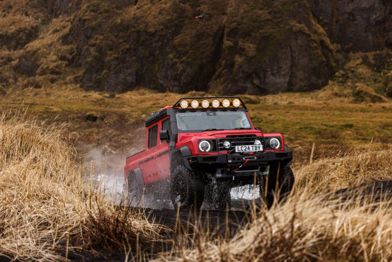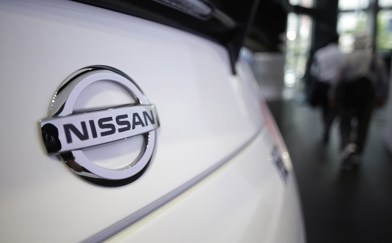Ford’s global executives have reaffirmed that the Blue Oval doesn’t just intended to persist with diesel and petrol-powered Rangers in its International Markets Group (which includes New Zealand) in the years ahead – it’s also actively looking for opportunities to expand Internal Combustion Engine (ICE) technology.
IMG includes nearly 100 countries, including NZ, Australia, Africa, ASEAN, India, Mexico, the Middle East and South Korea, as well as a number of “emerging” markets around the world.
While Ford is committed to a third of its global production being EVs by the end of 2023 (600,000 per year, made up of F-150 Lightning, e-Transit and Mach-E, all pictured above), the company’s business model still has ICE at its core.
Of the three separate product planning divisions within Ford – Blue (ICE), Model e (EV) and Pro (commercials), it’s ICE that is still arguably the most important.
“The vast majority of our business spending is still in ICE,” says Trevor Worthington, vice president of ICE programmes. “It’s incredibly important to us, and even markets that are transitioning quite quickly to BEV are still reliant on an underpinning of ICE vehicles”.
Ford says ICE is crucial not just to meet customer wants/needs, but because the revenue from ICE is helping fund its US$50 billion investment in EVs. If there’s no ICE, there’s no EV.
Worthington says that beyond 2027/28, half of the ICE vehicles sold by Ford globally will be to those IMG markets outside the US, Europe and China, which still suit ICE.
“That’s why it’s incredibly important to grow and nurture vehicles like Ranger/Everest, because they’re the vehicles that play in those spaces,” says Worthington.
“The anchor for the money that we make in the US is F-series/Explorer; the money we make in Europe is from Transit; but the money we make in IMG is primarily Ranger/Everest. These are very important customers.”
While there are moves to ban the sale of ICE vehicles in Europe and the UK in the next decade, Worthington says combustion engines will continue for many IMG markets well beyond 2030.
His comments may resonate with many ute-driving Kiwis: “The point is that there’s going to be a need for the ICE business, because ICE customers have unique requirements, whether that’s off-road, whether it’s family travel over long distances, whether it’s commercial vehicles that need to tow at higher speeds.
“There are also the effects of government policy incentives, or the cost of fuel, that mean some markets will go much more quickly towards electrification and some are just going to take longer.
“They can’t all turn on a dime because different markets have different views and incentives. For a lot of customers, the choice will still be an ICE vehicle”.
Worthington says that Ford’s ICE division is “about growth, it’s not about defending”. Ford is still looking for “unmet needs” from its ICE customers via the Blue division, which may have gone unnoticed in the past because “we were broadly focused on too much”.
The development of the Ranger Raptor is cited as a prime example of Ford seizing this kind of opportunity: “With Ranger generation-one we didn’t have a global market for Raptor,” says Worthington. “What we worked on was - what’s the incremental opportunity?
“We never had a big-six luxury/performance feel, and that’s an example where we delivered on unmet needs. We go through that thought process every single day.”
It’s well-known that the latest Ranger has been engineered for electrification, with the longer wheelbase and wider tracks opening up diverse powertrain possibilities. Plug-in versions have been spotted testing. But that doesn’t mean it’s making a massive rush towards EV power right now.
When that happens will depend on what customers want and what they are prepared to pay, says Worthington.
“Ranger is sold in 180 markets; it’s the most diverse product we sell. The thing we’ve tried to do differently with it is ask customers what our priorities should be.
“What we try to do is create vehicles and future-proof the alternatives. If the future is PHEV or BEV or, heaven forbid, something else – hydrogen or rocket fuel - we’ve got the architecture to respond to customer needs.
“I don’t know what the path is. I know the stuff we’re working on, of course… but I can’t tell you that.”
The catalyst for large-scale production of a plug-in Ranger may come not from Clean Car legislation in a tiny nation at the bottom of the world, but with Europe’s introduction of Euro 7 emissions regulations in 2025, which works towards effectively outlawing ICE. Ranger remains Europe’s best-selling ute, business that’s also “incredibly important to us,” says Worthington.





